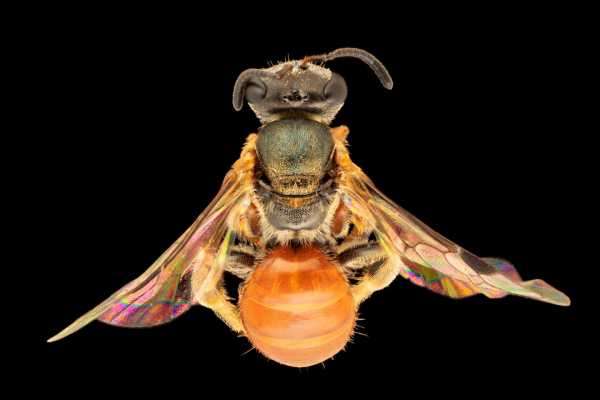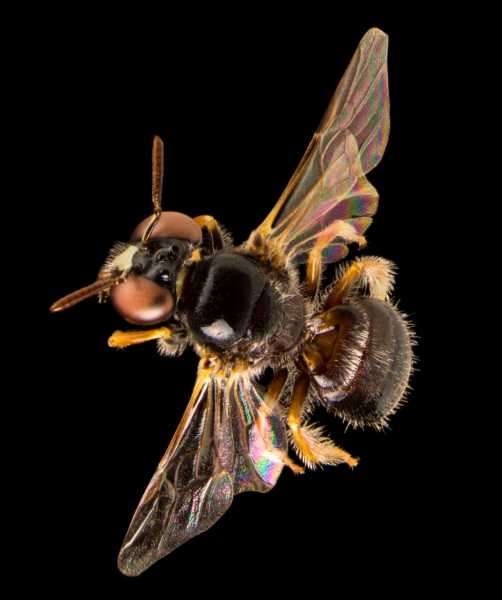
This female bee is Fijian bee species (Homalictus hadrander)
Sick of frightening ‘murder hornets’? Then feast your eyes on these beautiful rainbow bees, which are currently buzzing around their homeland of Australia.
One of the top plant pollinators in the country, these colorful bees (of the genus Homalictus) have colonized many regions of Australia and the South-West Pacific. These stunning Homalictus bees glisten with patches of aqua blue, golden green and orange, according to Aussie Bee, a website hosted by a private organization called The Australian Native Bee Research Centre. The little characters carry pollen on fine feathery hair beneath their abdomen and on their hind legs, according to Aussie Bee.
Though previous studies have suggested that the bees had come from Australia, researchers hadn’t yet examined their evolutionary history. Now, a new study finds that indeed, the buzzing beauties originated in tropical regions of Australia and then dispersed into subtropical, temperate and arid regions of that country and then expanded into the Pacific.
“Homalictus bees are a leading generalist plant pollinator across Australia and as far north as southern China,” study co-author James Dorey, a doctoral candidate at Flinders University in Adelaide, Australia, said in a statement. Understanding where the bees originated and how they became broadly distributed across Southeast Asia, Indonesia, Australia and archipelagos of the Pacific Ocean where they now play “a keystone pollination role,” is important to understand plant-bee co-evolution in the area, the authors wrote in the study.

This is another, more uncommon, species of pollinating bee (homalictus tatei)
Dorey, who is a photographer and native-bee expert, and his colleagues analyzed mitochondrial DNA — genetic material found in the cells’ powerhouses called mitochondria that is inherited along the maternal lineage — from three different Homalictus species from Papua New Guinea, the Pacific and Australia. By looking at the variations in mitochondrial DNA for different species, scientists can figure out where they came from and how they dispersed.
They found that the bees had a tropical origin, making it unlikely that they dispersed from Africa or Antarctica as had been suggested for other bee species found in Australia. It’s also possible that they could have arrived from tropical regions of Asia as well, according to the study. They then dispersed multiple times into both the Pacific and into the subtropical, temperate and arid regions of Australia, the authors wrote.
Earlier research had found other Australian bees, such as Exoneurella tridentate, actually originated in Antarctica millions of years ago, according to a statement. The authors hope that understanding bee origins could help reveal how climate change may impact the bees in the future. “Hopefully, the diversity of our native bees will make them more resilient to future climate scenarios, which will be critical for agriculture in a changing world,” Schwarz said.
The findings were published online on March 23 in the journal Transactions of the Royal Society of South Australia.

The Exoneurella tridentate species (a male bee shown here) is thought to have origins in Antarctica.
Originally published on Live Science.
Sourse: www.livescience.com





